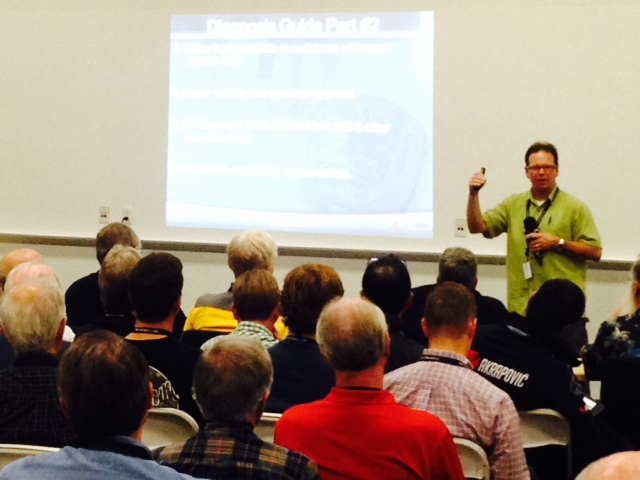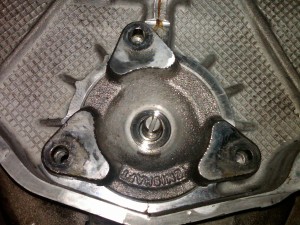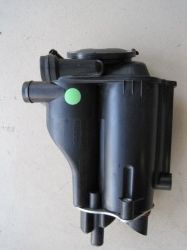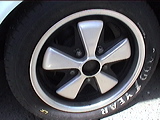Posted on 12/3/2014

In November, we attended Porsche Club of America’s, or PCA’s, Tech Tactics. Tony Callas joined other PCA members and Porsche Engineers as the Keynote speaker for this year’s event. The 150 attendees learned Porsche diagnostic techniques from Tony, toured the Porsche Training and Parts Distribution Center in Ontaria, CA, and learned about the latest cars and technologies. Sign up for our newsletter to receive updates on future Porsche events
Posted on 11/4/2011

One of the more common issues with the M96 engine has been and remains the degradation of the Intermediate Shaft Bearing (IMS). If the IMS begins to wear severely and continues to do so undetected, the IMS will eventually fail. A failure of this vital engine component can set in motion a myriad of collateral damage to other internal components. The resulting unfettered spread of metal debris will result in a catastrophic failure of the engine. The frustrating part of the IMS issue is in not knowing if the problem is present in your 986 Boxster or 996 Carrera or one you are considering for purchase. The IMS and almost all of the other potential failure scenarios associated with the M96 engine have one easily overlooked symptom that precedes a deadly failure. This symptom is where high amounts of ferrous (iron) metal particles are present in the engine oil. If the deteriorating part, that is shedding metal debris into the oil, can be found and replaced in a timely m ... read more
Posted on 1/22/2011

The Engine oil air separator directly affects the engine crankcase atmosphere because basically, all Porsche’s from 1980 on, including the current 986, 987, 996, 997, Cayman & Cayenne engines, all are positive crankcase type systems. This means that the engine crankcase has vacuum supplied from the intake manifold to collect and burn the residual combustion by-products or blow-by in the crankcase by running it through the engine again, all in an effort to lower the vehicle emissions. On most occasions when the oil separator fails, the low pressure (vacuum) in the engine crankcase rises to an unusually or abnormally high figure and, more likely than not, it ends up drawing engine oil into the intake system. This usually fouls spark plugs and, in rare cases, causes damage to the oxygen (O2) sensors, catalytic converters and possibly various other sensitive fuel injection components. In extreme cases an oil separator failure with excessively high vacuu ... read more
Posted on 12/26/2010

Since the introduction of the modern steel belted radial tire, automotive tires can now safely last upwards to 80,000 miles. Most automotive manufacturers recommend that tires be in service no longer than 6 years on the vehicle, and no longer than 10 years from the date of manufacture. DOT Number — Mandated by the federal government, every tire has a Department of Transportation number. Up until 1999, the last 3 digits (and from 2000 on, the last 4 digits) of the DOT number describes the week and year the tire was manufactured. For example, tires manufactured in 1999 and earlier with a DOT number ending in 299 would mean the tire was manufactured in the 29th week of 1989 or 1999. From 2000 on, a tire manufactured in the 29th week of 2009 would have 2909. In all actuality, the amount of rubber that touches the road, also known as the contact patch, is only approximately a 3” x 8” rectangular section. Contrary to popular belief ... read more